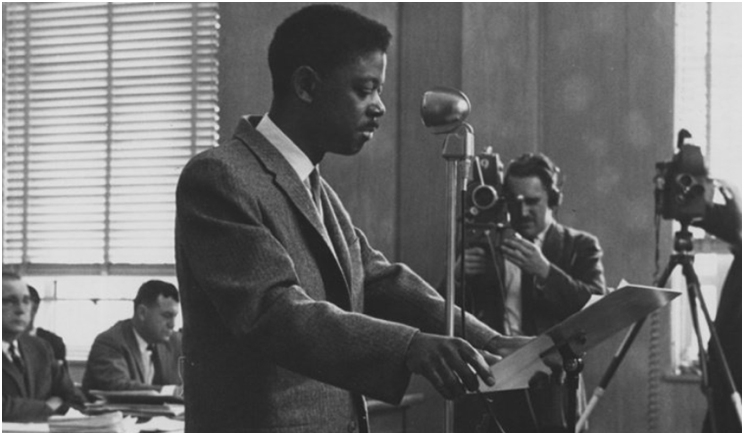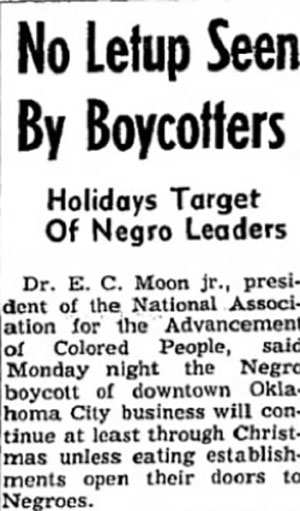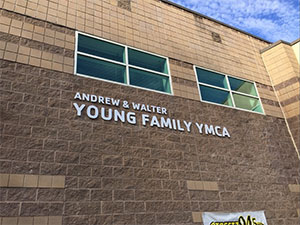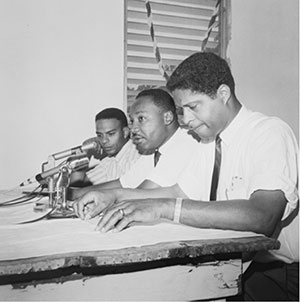
Civil rights preachers and lawyers are better known, but under-recognized African-American dentists and other medical professionals also were on the front lines on the civil rights struggle, risking much as change agents.
For example, Dr. E.C. Moon Jr. personifies the courage and leadership of dentists throughout the South. He helped lead a boycott of businesses in Oklahoma City to push for desegregation of public eating establishments. In 1960, he was front-page news (Figure 1).
That year, Dr. Martin Luther King visited Oklahoma City on July 29, speaking to 1,500 at a Baptist church. Dr. Moon, who served as local chapter president of the National Association for the Advancement of Colored People (NAACP), was sued for libel after he sent a letter to the police chief and media outlets calling for further investigation into a fatal shooting of an African-American man in his front yard by a white police officer that year.
During that era, libel laws were abused to stifle criticism of white supremacy and to chill the free press. In 1964, the unanimous US Supreme Court ruled that successful libel claims must prove reckless disregard for the truth, or “actual malice.” That legal standard, established in New York Times v. Sullivan, continues to this day.
 |
| Figure 2: The front page of The Daily Oklahoman, October 4, 1960. |
 |
 |
| Figure 3: In 2004, Atlanta’s Southwest YMCA was named for Dr. Walter Young and his brother, Andrew. | Figure 4: Andrew Young, Dr. Martin Luther King Jr, and Dr. Robert Hayling, far right, at a press conference in St. Augustine in 1964. Photo by Frank Murray, courtesy of ACCORD Civil Rights Museum. |
The Sullivan ruling by the nation’s highest court was a civil rights case and a First Amendment case. Lester B. Sullivan, who was police commissioner in Montgomery, Alabama, sued The New York Times for $500,000 because a full-page ad in 1960 criticized brutal police tactics in the South against civil rights protesters. The advertisement, which did not name Commissioner Sullivan, solicited money to help pay Dr. King’s mounting legal expenses.
The libel lawsuit against Dr. Moon was part of the runup to the landmark Sullivan decision. Like Dr. Moon, his dentist peers in other cities also fought discrimination and racism.
In Louisiana, Dr. C.O. Simpkins Sr. was closely associated with Dr. King. He left Shreveport when his house was firebombed and he couldn’t get insurance for his home or dental practice. When he returned to Louisiana after 26 years of “self-imposed exile” in New York, Dr. Simpkins was elected to the state House of Representatives. He retired from dentistry in 2011.
Dr. Roy Charlie Bell Sr. sued to desegregate hospitals in Georgia and elsewhere (Bell v. Fulton-DeKalb Hospital Authority). He is mentioned in Chapter 16 of Dr. King’s autobiography, which focuses on the civil rights movement in Albany, Georgia, including Dr. King’s time in jail there.
“Soon, the Rev. Mr. Walker came over with Dr. Roy C. Bell from Atlanta and Larry Still, a writer from Jet. Roy inspected Ralph (Abernathy’s) teeth and said he would arrange with Chief Pritchett to get us some ‘food packages.’ I told him this was needed because we would starve on the jail house food. The Albany Jail is dirty, filthy, and ill-equipped. I have been in many jails and it is really the worst I have ever seen,” King wrote.
In 1996, the Georgia Senate passed a resolution to commend Dr. Bell’s desegregation work.
Dr. Walter Fuller Young supported lunch counter sit-ins at New Orleans’ downtown Woolworth’s and at other businesses from 1961 to 1964. During that period, Dr. Young was introduced to Dr. King by his brother, the Rev. Andrew Young. Their father was a dentist. In 2004, Atlanta’s Southwest YMCA was named for Dr. Walter Young and his brother, Andrew.
In St. Augustine, Florida, the former dental practice of Dr. Robert Hayling is now a civil rights museum. Considered a “father” of the civil rights movement in St. Augustine, Dr. Hayling was influential in bringing Dr. King to the city in 1964.
Dr. Hayling relocated to Fort Lauderdale in 1966. He became the first African-American in Florida to become a full member of the Florida Dental Association, the ADA, and his district dental association, ADA News said in an obituary published in early 2016.
Other medical professionals also played key roles in the civil rights movement, such as Dr. Von Mizell, an African-American surgeon and founder of the NAACP in Broward County, Florida. The Ku Klux Klan burned a cross in his front yard and threatened to kill him. Friends and supporters had to go to Dr. Mizell’s office at night to escort him to his car and then home, according to his nephew, Don Mizell.
A pharmacy owned by Aaron Henry in Clarksdale, Mississippi, served as a gathering place for the civil rights movement. It was burned in 1963. The NAACP leader’s home was firebombed. Jailed more than 30 times for his civil rights work, Henry was elected to the Mississippi House of Representatives in 1979.
As our society, including dentistry, embraces diversity and fairness, we should remember with pride the dentists and other medical professionals who forged progress two generations ago.
Dr. Edmondson is an associate
professor and director for graduate studies at the E.W. Scripps School of Journalism, Ohio University. She is the author of In Sullivan’s Shadow: The Use and Abuse of Libel Law During the Long Civil Rights Struggle. Follow her on Twitter: @ProfEdmondson.
Related Articles
Minorities Underrepresented in the Dental Workforce
Pipeline Program Steers More Underrepresented Dentists Toward Dental School
Harvard Honored for Diverse Dentistry Pipeline Program



